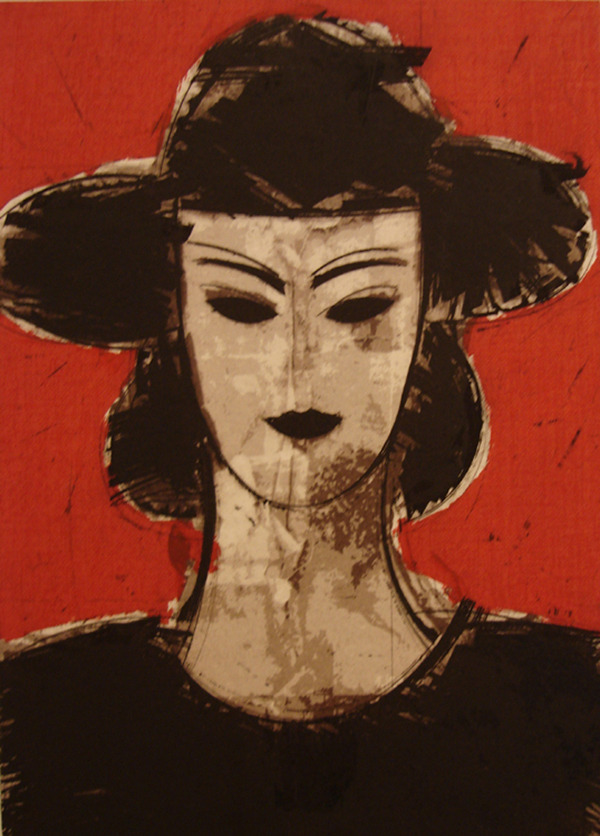
Manolo Valdés, an internationally renowned artist, returns to Rome after 25 years (Galleria Il Gabbiano, 1995), with a solo exhibition titled Le forme del tempo (The Shapes of Time) held in the magnificent halls of the Museo di Palazzo Cipolla curated by Gabriele Simongini.
Around seventy artworks (from the artist’s studio and important private collections) between paintings and sculptures (in wood, marble, bronze, alabaster, brass, steel, iron etc.) some of which are monumental, will recount Valdés’s creative career from the early nineteen-eighties (just after the end of his experience in Equipo Crónica) to date.
In the figurative and playfully visionary research of Valdés, the artists of the more or less distant past (from Velázquez to Rubens, Zurbarán, El Greco, Ribera to Léger, Matisse, Lichtenstein and so on), become interlocutors with whom to keep in daily contact and pay homage to, broaden the polyphonic space of his work. It is as if the image that Valdés captured in the more or less distant past had been transformed, adopting the changes of the subsequent art (especially through Informalism and Pop Art) until it appears in a new guise in front of us, with the holes and tears of the material marked by the long journey through time.
The exhibition catalogue, published by Manfredi Edizioni will contain texts by Professor Emanuele, Gabriele Simongini and Kosme de Barañano, as well as the works of art exhibited and an extensive bio-bibliography.
Manolo Veldés was born on the 8th of March 1942 in Valencia, Spain. In 1957 he enrolled in the Real Academia de Bellas Artes de San Carlos in Valencia. Two years later, he left school to devote himself entirely to painting. In 1962, he participated in the National Exhibition of Fine Arts, presenting the artwork ‘Barca’ (now kept at the Museo Nacional Centro de Arte Reina Sofía), in which those that will be the constant elements of his painting are already evident: the figurative theme and the informal use of the medium.
Valdés draws considerably on the artistic heritage of Spain, particularly on Velázquez, Picasso and on the Art Informel of his immediate predecessors: Manolo Millares, Antonio Saura and Antoni Tàpies.
At the end of 1964, he participated in the creation of the Estampa Popular group which distinguished itself by its use of advertising images and engravings as a support, popular prices and a theme mainly based on Valencian life. The group split up after four solo shows. In 1965, together with Rafael Solbes and Jean A. Toledo, Valdés participated in the XVI Paris Salon Young Painters Exhibition and received great critical acclaim. Hence the creation of Equipo Crónica group, which differed from the previous group due to the prevalent use of painting and the choice of a broader, impersonal theme that was strongly influenced by Pop Art, with a critical look at Franco’s regime and art history. Toledo left the group shortly after their first exhibition, while Valdes and Solbes continued to work together until Solbes’ death, in 1981.
In 1983, Manolo Valdés also achieved considerable success in the field of graphics and received the National Prize for Plastic Arts. Three years later, he was invited to participate in the Baghdad Biennale of International Plastic Arts Festival, where he won the Gold Medal.
Since 1992, he has focused his interest on sculpture and decided to open a larger studio in New York, where he moved to in 1998. In 1999, Valdés and Esther Ferrer represented Spain at the Venice Biennale.
In 2000, Valdés returned to Spain and stayed alternately in New York and Madrid. In 2002, the Guggenheim Museum Bilbao dedicated a retrospective to him. He created a set of sculptures in Madrid for the new International Airport. In 2006, the Reina Sofia Museum held a retrospective in which all the works created during his last twenty-five years are gathered.
Amongst the many exhibitions to be mentioned are those held at the National Art Museum of China in Beijing and the State Russian Museum in St. Petersburg. The Casa Rusca in Locarno dedicated an important anthological exhibition to him in 2019. His works are in museums such as the Metropolitan Museum of Art in New York City, the Musée National d’Art Moderne – Centre George Pompidou in Paris, the Museo Nacional Centro de Arte Reina Sofía in Madrid, the Guggenheim Museum Bilbao Foundation and the Kunstmuseum in Berlin. His monumental sculptures have been displayed or permanently installed in New York (Park Avenue, the Botanical Garden and Broadway), Paris (Place Vendôme and the Palais-Royal gardens), Madrid, Valencia, Monte Carlo and Pietrasanta.
Palazzo Cipolla, Via del Corso, 320 ROME
Image: Manolo Valdés
